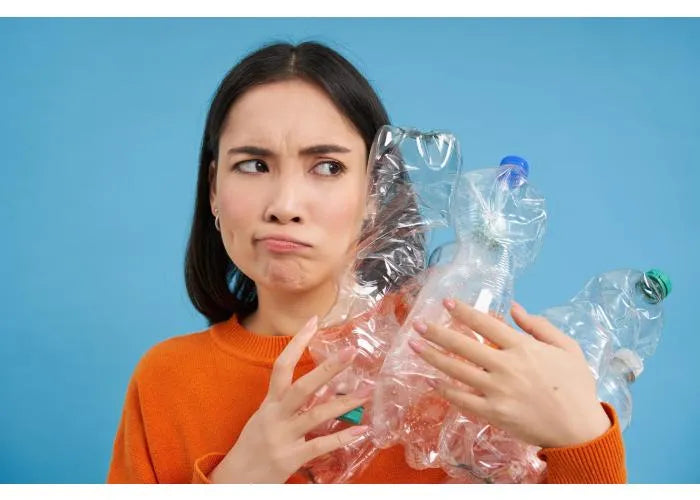It is not only our feet which leave a footprint on sandy beaches, but our heavy reliance on plastic materials is also creating a visible yet pervasive “plastic footprint” in the environment. Reducing plastic water bottle pollution and eliminating the dangers of plastic water bottles to the environment is something we can all tackle in our daily lives. We are now going to share with you some interesting plastic bottle pollution facts, and the negative effects of plastic water bottles on the environment. Then we want you to bring to your attention the harmful bit; what happens if plastic pollution continues?
So why are plastic bottles bad for the environment?
According to CNN.com, the bottled water industry is a juggernaut. More than 1 million bottles of water are sold every minute around the world and the industry shows no sign of slowing down, according to a new report. Global sales of bottled water are expected to nearly double by 2030. Plastics make up to 12% of the global waste stream but poor waste governance and its persistence in the environment leads to significant environmental pollution (1). There is also a growing body of evidence in research suggesting that the presence of plastics in agricultural soils and in aquatic biota poses potential risks to human health via ingestion in food consumed by humans (5). It is also considered a major threat to both wildlife and human wellbeing. The impacts of plastic water bottle pollution is now ubiquitous in the World Ocean, causing an unprecedented environmental crisis, with an estimated 10 million tonnes of litter leaking into the marine environment every year (2). The main contributor is larger plastic litter, including everyday items such as drinks bottles and other types of plastic packaging (3).
Plastic pollution threatens global social, environmental, and economic sustainability (4). Many single-use plastic items are difficult to recycle or can only be recycled a few times before they become unsustainable plastic waste which is predicted to reach up to 53 million metric tons annually by 2030 (5).
What can you do to help reduce plastic bottle pollution?
When your next using a plastic bottle, always remember that only two percent of plastic packaging waste is recycled back into packaging (6). IF JUST ONE IN TEN BRITS REFILLED ONCE A WEEK, WE’D HAVE 340 MILLION LESS PLASTIC BOTTLES A YEAR IN CIRCULATION (7).
1. Duncan, E. M., Davies, A., Brooks, A., Chowdhury, G. W., Godley, B. J., Jambeck, J., ... & Koldewey, H. (2020). Message in a bottle: Open source technology to track the movement of plastic pollution. PLoS One, 15(12), e0242459.
2. Boucher, J., & Billard, G. (2019). The challenges of measuring plastic pollution. Field Actions Science Reports. The Journal of Field Actions, (Special Issue 19), 68-75.
3. https://www.refill.org.uk/the-problem-with-plastic-3/
4. Walker, T. R., & Fequet, L. (2023). Current trends of unsustainable plastic production and micro (nano) plastic pollution. TrAC Trends in Analytical Chemistry, 116984.
5. Walker, T. R., & Fequet, L. (2023). Current trends of unsustainable plastic production and micro (nano) plastic pollution. TrAC Trends in Analytical Chemistry, 116984.
6. Phelan, A. A., Meissner, K., Humphrey, J., & Ross, H. (2022). Plastic pollution and packaging: Corporate commitments and actions from the food and beverage sector. Journal of Cleaner Production, 331, 129827.
7. https://www.refill.org.uk/the-problem-with-plastic-3/






